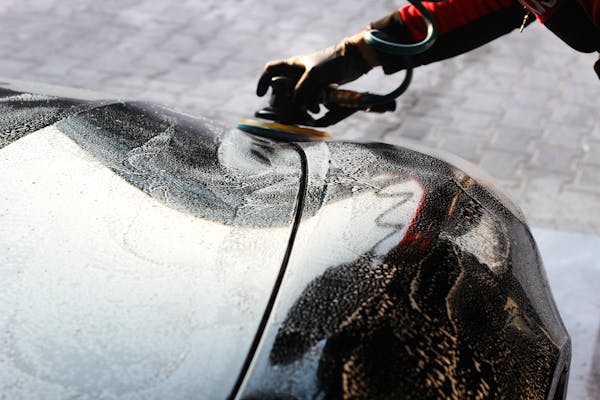Car detailing helps owners enjoy their vehicles and maintain resale value. It involves cleaning, restoring and protecting interior and exterior surfaces. It also includes paint correction and protection.
Most DIYers start their detailing job by shampooing the carpet, but this pushes dirt from the dash, seats and door panels onto the freshly cleaned carpet. Professionals start at the top and work their way down.
Exterior
Most car owners think of detailing as a simple “wash and wax,” but that’s only the tip of the iceberg. To get your car to shine like the pros, it’s a much more involved process that involves pre-washing with acid-free degreasers and then pressure washing with specialized soaps. It also involves using iron dissolver to eliminate industrial fallout, rail dust and other hard-to-remove contaminants. Then, tar and glue remover is applied to stubborn spots. Finally, a clay bar is used with a lubricant to thoroughly clean the paint one panel at a time.

Typically, an entry-level sealant is applied to protect the finish and provide some UV protection, but for even more shine and protection consider upgrading to a ceramic coating! This coating is long-lasting and withstands harsh weather conditions. The wheels and tires are also cleaned and protected with a rubber, plastic, or fabric protectant. This helps to resist stains, repel water and mud, and looks great!
Interior
A basic car wash may clean the surface of a vehicle, but a thorough detailing job protects a car’s paint and interior so it stays in good condition over time. This helps preserve resale value and makes a car more appealing to potential buyers.
Detailers clean the inside of a vehicle with products and techniques that vary depending on the type of material, such as synthetic fiber carpeting and upholstery, leather or vinyl, wood, and plastics. This includes vacuuming, shampooing, steam cleaning, and the use of special tools to reach inaccessible areas such as between seat cushions.
The paint is cleaned using a variety of methods, including pressure washing and clay barring to eliminate bound contaminants that washing alone can’t remove. Then, a wax or sealant is applied to help protect the finish against the elements. Similar protection is applied to plastics, rubber, and chrome trim pieces. These processes can also correct minor flaking and scratches.
Engine
A clean engine bay demonstrates that you take care of your vehicle, which can increase its resale value. It also makes maintenance easier by making fluid leaks and other problems more visible.
Detailers start by misting the engine bay with degreasing solution and allowing it to dwell for 1 – 2 minutes. Then they use a brush to dislodge any visible buildup and rinse the area with water.
They may also spray a protective wax or sealant on the paint to help prevent future damage. Other services include conditioning the dashboard, cleaning vinyl surfaces and air vents to make sure every inch of the interior is clean.
Unlike car washes that use high-speed brushes to remove dirt and grime, detailing uses microfiber cloths and specialty tools like clay bars to gently break up embedded contaminants without damaging the finish or clear coat. It can even include a paint correction process to eliminate severe clear coat scratches.
Tires
A car’s tires are eye-catching, and a well-done tire detailing shows that you take your vehicle’s appearance seriously. Cleaning them requires a lot more than a simple hose-down, though. Using the right tools and techniques, you can transform your tires into beautiful and captivating assets that elevate the look of your entire car.
Modern tires are made of complex blends of natural and synthetic rubbers, fillers, metals, and other construction materials. Only about a third of a tire is actual rubber, while steel and textiles make up most of the rest.
A tire’s age is typically marked by an indent on the side of the tire with a number inside an oval. The last digits of this number tell the date the tire was manufactured (as required by the U.S. Department of Transportation). This is sometimes referred to as the “DOT code”. This information is useful when purchasing new tires because it will help ensure that you’re getting a tire with the proper load capacity and tread pattern for your car’s needs.